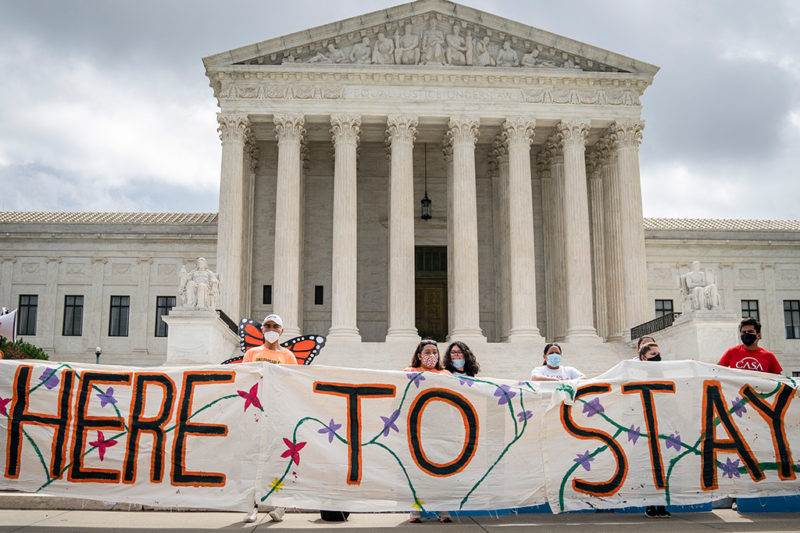Will This Supreme Court Term Ever End?
Supreme Court decision days have become another spectacle during the Trump years.

For full coverage of June Medical Services v. Russo, check out our Special Report.
Are we really going to be doing this through July?
With over a dozen cases yet to resolve, the U.S. Supreme Court took the bold step on Thursday of releasing a single, solitary opinion. And it was a doozy, with a majority of justices on the Court green-lighting the fast-track deportation of some immigrants. Justice Samuel Alito authored the devastating decision, which felt like it was written in retaliation for the Court’s earlier decision that saved—for now at least—the DACA program from being wiped out by the Trump administration.
Thirteen cases, including major decisions on abortion rights, birth control access, and state funding of religious schools, remain to be decided from the Court’s calendar this term. So do decisions on the constitutionality of the Consumer Finance Protection Bureau and whether President Trump has to turn over his tax returns. In theory, the Court should be releasing all those decisions before the end of next week. That’s because the Supreme Court’s term typically ends in June.
Now, look. I went to law school in part because I’m terrible at math and was told I’d have to do very little of it as a lawyer. But even by my back-of-the-envelope calculation, the Court would have to release—on average—three opinions every day, including weekends, to finish by the end of June.
That’s an aggressive schedule. And there’s nothing that mandates the Court finish its business by summer. Technically, the Court has until the start of the next term in October before it must conclude its business from this current term. And shortly after releasing its lone decision on Thursday, the Court announced two additional decision days next week, Monday and Tuesday—the final two days of the month.
Does the Court plan on releasing 13 opinions in two days? Good grief—I hope not. But if that’s the Court’s plan, it’s hard to see that as anything other than an attempt to bury a whole lot of big decisions full of bad news before the justices peace out of Washington, D.C., for the summer.
So it really does look like we’ll be in this Supreme Court waiting game through next week and probably longer.
Why is the Court like this? Do the justices like the drama and suspense? Does it take that long to decide a case and draft an opinion? The reality is, nobody knows. The Supreme Court is the least transparent and democratic of our institutions and often conducts its business without so much as an acknowledgment that the rest of us are watching.
That has to change.
To their credit, progressive groups have loudly called for serious court reform to be a part of any Democratic policy platform moving forward. And since Trump just had his 200th federal judge confirmed, serious court reform has to be part of any Democratic platform moving forward. Otherwise, what’s the point? Trump judges will kill off any progressive reforms before they’ve been allowed to take root, unless Democrats address the conservative capture of the federal courts.
This slow drip of opinions at the end of the Court’s term is simply another expression of the deeply undemocratic rot that has infected the federal courts. Millions of people are waiting for the Court to weigh in on their fundamental rights. They shouldn’t also be subjected to the kind of dramatic reality-television style reveal that Supreme Court decision days have become. There are better ways for the Court to do its business. The question is: Do the justices even care?

